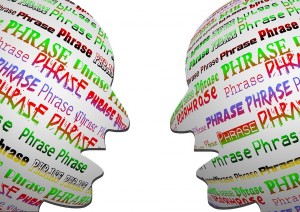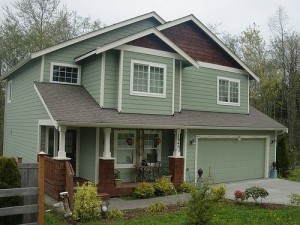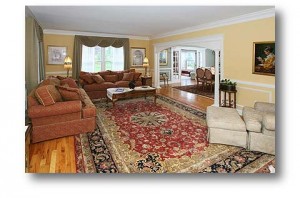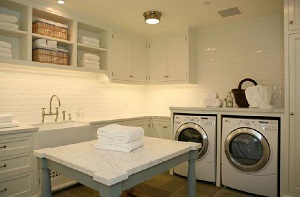 It’s small wonder that with this spring’s selling season underway, Highlands’s house hunters can afford to be a discriminating bunch—they have the luxury of picking and choosing from a crop of truly inviting offerings. And it doesn’t hurt that today’s low mortgage interest rates have enabled more Highlands properties to fit within more family budgets.
It’s small wonder that with this spring’s selling season underway, Highlands’s house hunters can afford to be a discriminating bunch—they have the luxury of picking and choosing from a crop of truly inviting offerings. And it doesn’t hurt that today’s low mortgage interest rates have enabled more Highlands properties to fit within more family budgets.
For those of us who get to translate those home offerings into words for the Highlands listings, the job is to find phrases that draw attention to each given property’s uniquely attractive features.
But there’s another dimension that complicates things. English is a rich and powerful language, but when it comes to marketing lingo, it’s also true that these days everyone is being deluged 24/7 by vivid advertising claims. We’ve all developed callouses when it comes to the ballyhooing we get from every quarter.
Today’s house hunters have developed sales resistance. Times 10!
So what’s the answer for cooking up language that helps a property jump out from among the others? One way is to find out Highlands’s Top 10 listing phrases—and avoid overusing them! Same ‘ol, same ‘ol isn’t what works when the object is to attract Highlands prospects. True, some truly accurate descriptors can’t be totally avoided—but emphasizing them isn’t likely to fire many house hunters’ imaginations, either.
Here are a group of most frequently appearing Top 10 listing words and phrases—with some alternatives more likely to spark more attention from Highlands house hunters:
1. Beautiful (‘gorgeous’ ‘spectacular’ or ‘captivating’ bring more energy)
2. Hardwood floors (what kind of wood—and what hue?)
3. Stainless steel (at the very least, add ‘gleaming’ or ‘lustrous’)
4. Updated (‘renovated’ ‘remodeled’ ‘renewed’…or maybe even ‘reimagined’)
5. Private (this one is actually okay as-is…it may be a cliché, but it’s a desirable one!)
6. Spacious (puh-lese! How about ‘cavernous’ ‘commodious’ or ‘enormous’?)
7. Landscaped (another okay one, but in need of a boost—like ‘lusciously’ ‘stunningly’ or ‘exquisitely’)
8. Custom (‘tailor made’ ‘individualized’ ‘unique’ ‘personalized’ or ‘specially crafted’)
9. Clean (this is close to Top 10 listing phrase malpractice: if it’s clean, it’s surely also ‘spotless’ ‘flawless’ or ‘immaculate’)
10. Brand new (could be ‘state of the art’ ‘untouched’ ‘mint’ or ‘just completed’)
Even after a bit of polishing, those Top 10 listing phrases and words need to have a credibility boost via listing photography that illustrates what’s being promised. Putting the whole package together is just one part of the service you can count on when you give me a call!





 If 90% of home buyers use the internet at some point in their search, the percentage who go to the Highlands listings has to be close to the same ballpark. It’s hard to imagine anyone NOT wanting to take at least a peek at the current listings. Even if they have already settled on a target property, curiosity would send most of us to check out the way it’s described in its Highlands listing.
If 90% of home buyers use the internet at some point in their search, the percentage who go to the Highlands listings has to be close to the same ballpark. It’s hard to imagine anyone NOT wanting to take at least a peek at the current listings. Even if they have already settled on a target property, curiosity would send most of us to check out the way it’s described in its Highlands listing. When you put your Sapphire home on the market, your most effective marketing mechanism isn’t the front yard For Sale sign—although that sign is certainly one way to generate valuable neighborhood awareness. It’s not the well-designed ad your Realtor® publishes, even in the most well-read Sapphire newspaper or magazine—although those expensive insertions can draw valuable inquiries.
When you put your Sapphire home on the market, your most effective marketing mechanism isn’t the front yard For Sale sign—although that sign is certainly one way to generate valuable neighborhood awareness. It’s not the well-designed ad your Realtor® publishes, even in the most well-read Sapphire newspaper or magazine—although those expensive insertions can draw valuable inquiries. Just as with movie credits, the features you find in Sapphire listings have a “billing order.” The “stars” may not be printed in gigantic superstar type—but the order in which they appear do reflect changes in current buyer priorities. For a homeowner soon to add their property to this spring’s Sapphire listings, it’s important to learn which features currently tend to attract the most favorable attention from prospective buyers. It’s of more than marketing interest, as well: knowing what’s in and what out can also help determine where improvement dollars should go.
Just as with movie credits, the features you find in Sapphire listings have a “billing order.” The “stars” may not be printed in gigantic superstar type—but the order in which they appear do reflect changes in current buyer priorities. For a homeowner soon to add their property to this spring’s Sapphire listings, it’s important to learn which features currently tend to attract the most favorable attention from prospective buyers. It’s of more than marketing interest, as well: knowing what’s in and what out can also help determine where improvement dollars should go. It is a good bet that the first place the public will spot your house for sale will be the Sapphire listings. If 90% of those who actually do buy a home go to the web during their search (researchers at the National Association of Realtors® say so), they will either go directly to the Sapphire listings or find them through a Realtor’s site.
It is a good bet that the first place the public will spot your house for sale will be the Sapphire listings. If 90% of those who actually do buy a home go to the web during their search (researchers at the National Association of Realtors® say so), they will either go directly to the Sapphire listings or find them through a Realtor’s site. When you are selling your Glenville luxury home, you are marketing to a narrow niche of the home-buying public. They’re high-end customers, certain to be very smart, business-savvy—and they will know their own mind. They will be hunting for value, of course, because the asking price warrants it. But they will also be looking for a property that has elements that are unique—that appeal to buyers who hope to find a residence not duplicated elsewhere.
When you are selling your Glenville luxury home, you are marketing to a narrow niche of the home-buying public. They’re high-end customers, certain to be very smart, business-savvy—and they will know their own mind. They will be hunting for value, of course, because the asking price warrants it. But they will also be looking for a property that has elements that are unique—that appeal to buyers who hope to find a residence not duplicated elsewhere.
